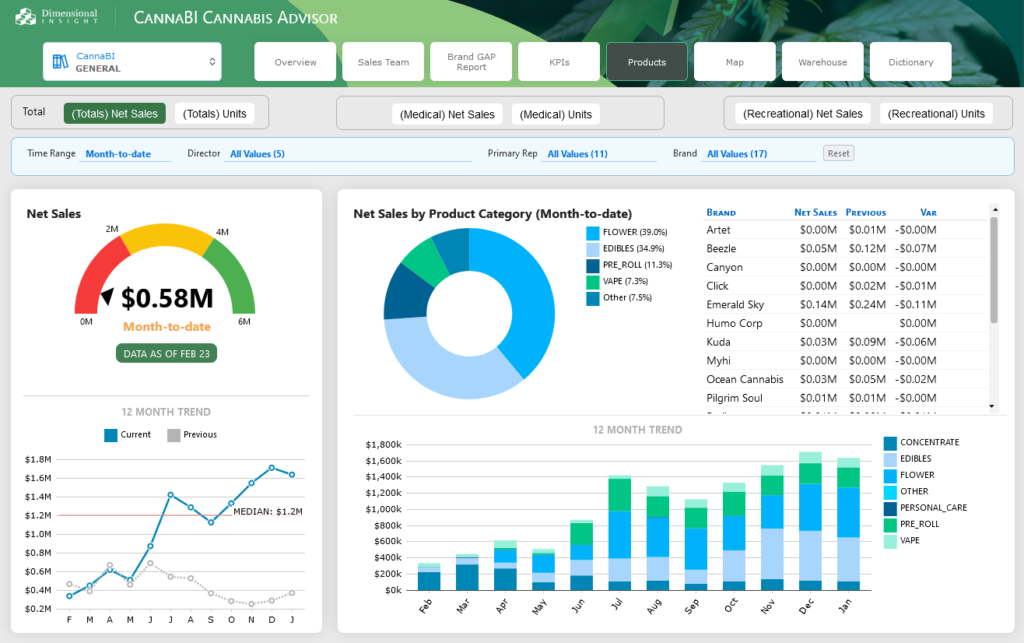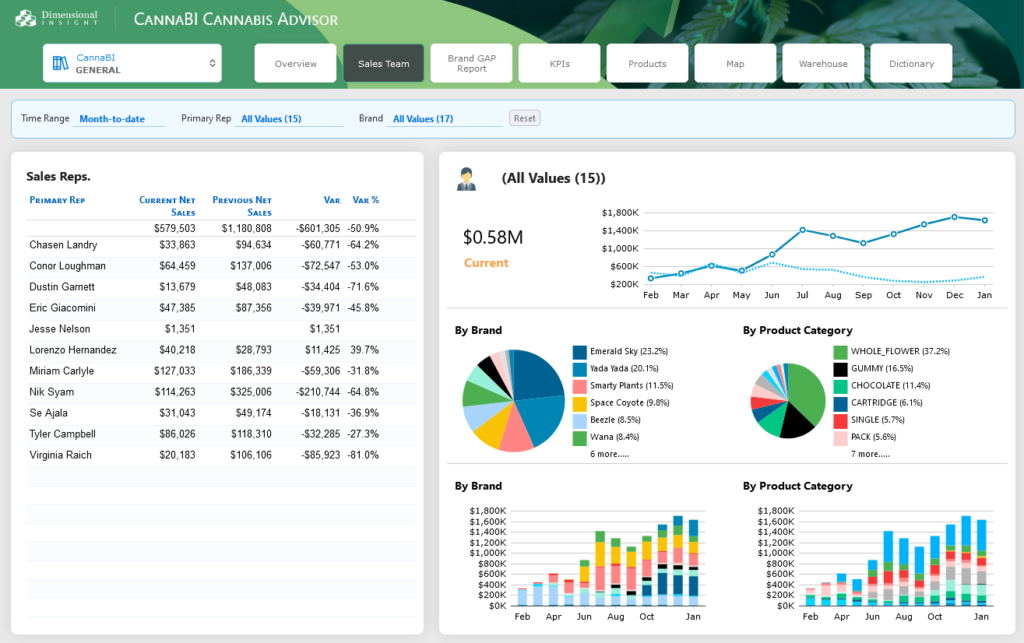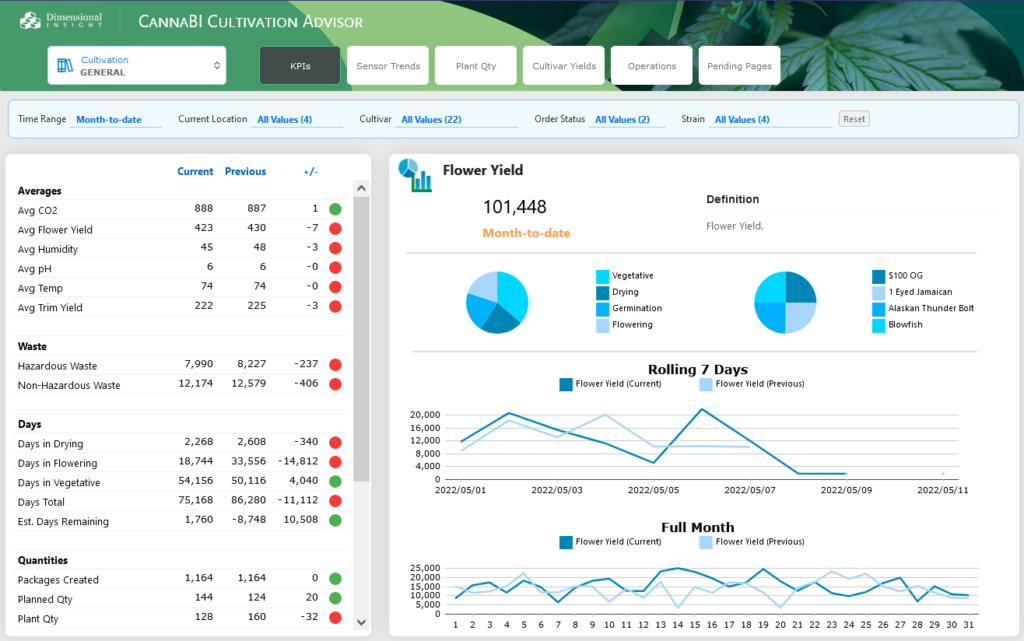The past few years have been very volatile for the cannabis industry, with many companies emerging amidst radical changes in state and local legislature. Although the nascent industry presents a host of new and exciting opportunities, there’s still a lot businesses have to learn if they want to capitalize on the market’s potential.
Here are some ways your cultivation business can use analytics to optimize your operations and increase ROI.
Inventory management
Most of a cultivator’s bottom-line comes down to making sure that its supply reflects what consumers are buying. Tracking sales and inventory data is key to understanding what’s selling and what’s not, and in turn, providing the insight necessary to reduce stock-outs and overstocks.
As the backbone of the cannabis industry, cultivators are responsible for facilitating which products are available on store shelves. However, this requires insight into the dispensaries’ perspective. For most cultivators, managing so many different feeds and attempting to consolidate them manually is simply too time- and resource-intensive. This is why many businesses are now employing analytics to optimize their inventory management.
On top of allowing cultivators to consolidate their data from various siloes into one unified and standardized feed, enterprise analytics platforms allow for precision forecasting through built-in predictive models. This is crucial for maximizing a business’s ROI and reducing wasteful spending.

Sales programming
Proper inventory management doesn’t mean much if a cultivator isn’t capitalizing on it with effective sales programming. Unfortunately, cannabis cultivation inhabits a particularly complex sales landscape where account optimization is seldom a reality. To best navigate the dynamics of the highly regulated cannabis industry and identify which accounts are worth pursuing, brands need a comprehensive view of their sales data.
By analyzing sales and market data, cultivators are able to identify where revenue opportunities exist and strategize their market approach accordingly. Furthermore, analytics can also be used to track goals, enabling cultivators to have a laser focus on what they need to accomplish and allowing them to evaluate what’s working and what’s not in a quick manner.
Some analytics platforms also feature automated reporting, allowing cultivators to view their sales data in real-time and see how different divisions are performing. This transparency makes it easier for businesses to align their inventory with their sales programs as well as answer specific market-driven questions. With manual processing, cultivators often lack day-to-day visibility into how their programs are performing, and in-turn are unable address any problems or opportunities in a timely fashion.

Labor shortage analysis
Major disruptions like the COVID-19 pandemic have resulted in a substantial labor shortage in the United States — an event now referred to as The Great Resignation. Due to the expensive costs associated with recruiting and onboarding new employees, more and more cultivators are turning to HR data analytics for retaining their workforce.
Due to its volatile nature and immature market history, employee retention within cannabis is particularly brutal. According to a report from Headset, the average turnover rate for budtenders in both the US and Canada is a whopping 55%, and its likely other businesses within the industry aren’t faring much better. Much of this is attributed to burnout as a result of the industry’s aggressive and rapid growth.
With analytics, cultivators can measure their turnover and retention rates, providing insight into how many employees have left their company over a set period of time. These numbers can be further broken down by whether or not the turnover was voluntary, how well-performing those employees were, and how turnover rates compare between different departments and managers.

Cultivation
Unsurprisingly, one of the most prolific applications of data analytics for cultivators is, well, cultivation. Every aspect of how a plant is grown has a direct result on its yield and end-product. Different strains have their own specific needs and ideal environmental conditions, and the only way to identify and satisfy these needs is by looking at the data. With the proper analytics platform, growers can get a clear picture of their facility’s productivity and ensure that they’re taking the right steps to maximize their yield and ROI.
Of course, any grower is already familiar with the importance of tracking the bigger metrics such as lighting, temperature, humidity, etc. But comprehensive analytics goes beyond just these individual stats — the end goal is getting a grasp on the big picture. Growers can use integrated data feeds to monitor their entire operation from one location, whether it be a network of IoT sensors to check soil quality or a systems controller to watch for malfunctioning equipment.

Choosing the right analytics platform
Not all cannabis analytics platforms are built the same. Transforming the potential hidden in your data into meaningful and actionable insights requires a solution that can meet your business’s specific needs across the entire enterprise.
With CannaBI, cannabis cultivators and manufacturers benefit from:
- Seamless integration
- Comprehensive data governance
- Advanced analytics
- Mobile access
- Stunning visualizations
To learn more about how analytics can help your business, check out CannaBI or our whitepaper—”How Analytics is Empowering Cannabis Cultivators and Manufacturers.”
- How Spirits Brands Can Improve Brand Loyalty with Data Analytics - January 30, 2024
- The Collapse of Herbl, and How Other Cannabis Distributors Can Avoid the Same Fate - January 24, 2024
- Top 5 Blog Posts of 2023 - December 28, 2023



